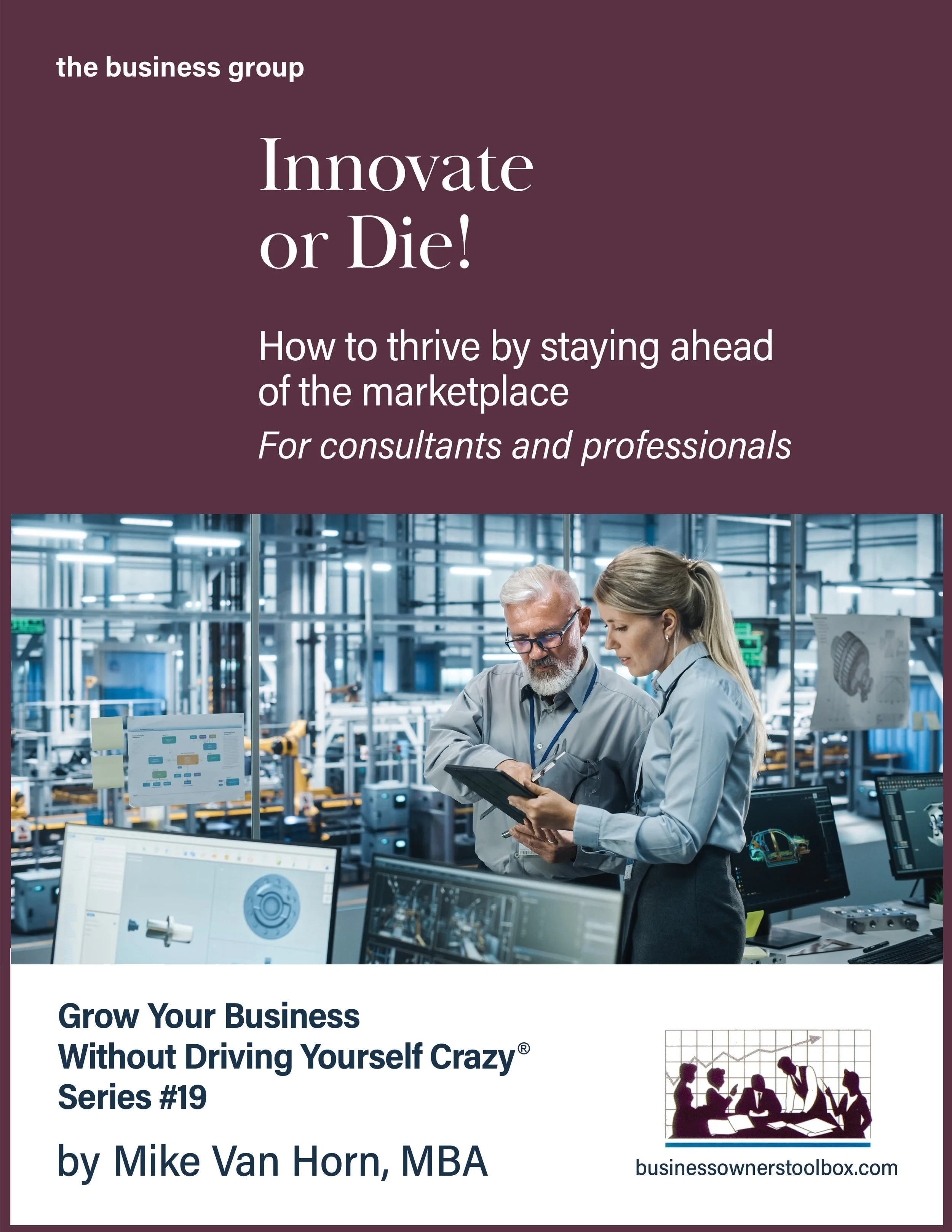Innovate or Die!
How to thrive by staying ahead of the marketplace. For small business owners, consultants and other professionals
Michael Van Horn
#19 in the series
You must keep developing new offerings and marketing strategies to keep up with—and ahead of—your competition. But how does a small business owner, who’s working full-time running the company, carve out time to create and develop new things? Here’s a step-by-step innovation program.
Topics covered
- Both threat and opportunity drive innovation.
- What is innovation? From tweaks to disruption
- Focus on your Core E—expertise, competency, technology, processes, products
- How to spot opportunities and size up the potential
- The Steve Jobs lesson: Say no to 90%.
- Balance inner brilliance and passion with outer opportunity.
- Innovative marketing. Everything is changing, but the basics remain the same.
- Innovative processes and operations. Not sexy, but they sure are lucrative!
- Pitfalls to innovation. The things that keep you stuck, and how to get past them.
- Your innovation action plan
Many consultants and professionals have dealt with this challenge, and have resolved it for growth and profitability. This workbook gives you the tools to work through this for yourself. You won’t just read good ideas, but answer questions to apply them to your business situation—not just read what some “expert” says.
Warm up exercise
From the workbook
Innovation Killers for Consultants and Other Professionals
Billable work always takes precedence. You set your “development time,” then a client calls, and you schedule right over it.
Reluctance to invest. Consultants are often very conservative with their money and
are reluctant to go into debt to invest in innovation or any kind of business change or growth.
Engineer mentality. You love developing, but neglect branding, promotion, and marketing. You don’t budget nearly enough for roll out and marketing.
Ready fire aim. You fall in love with an idea and chase after it without going through planning and promotion process.
Ready aim wait. This is the opposite of ready, fire, aim. You’re paralyzed by trying to know everything before taking action. Or, your work habits and thinking processes thwart creative thinking. Perfection is the enemy of completion.
Beat a dead horse. You stay with the idea far too long. It was good to start with, but
you should have read the signs and cut your effort.
